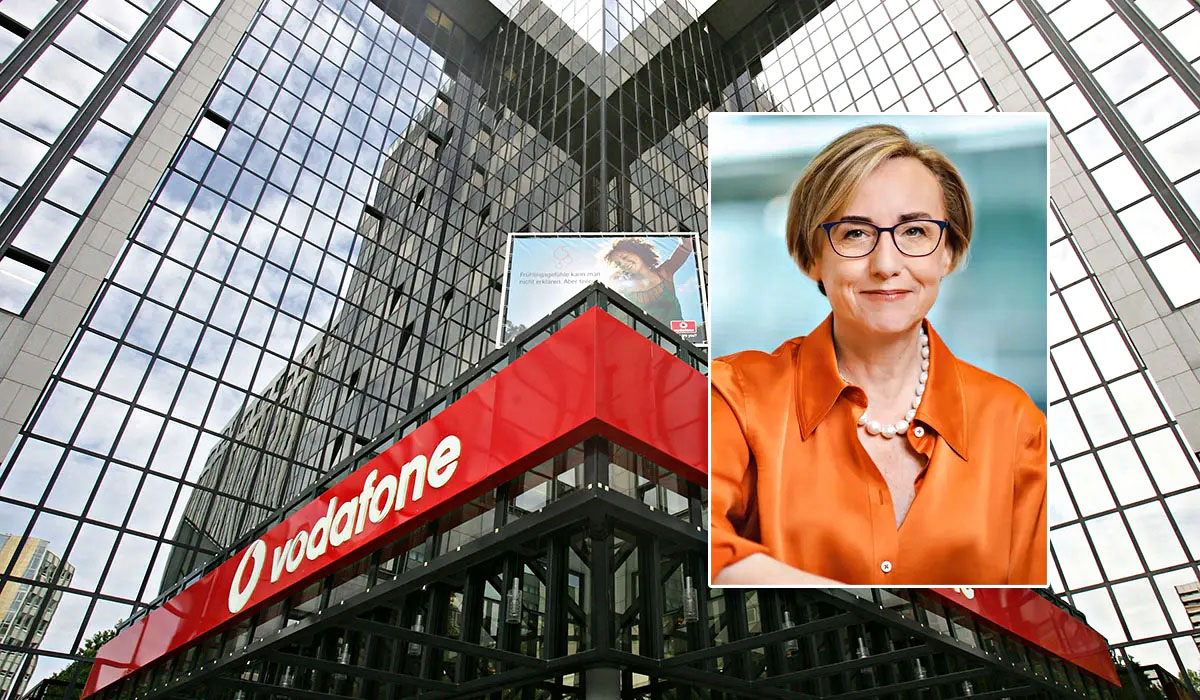Home>Finance>What Companies Have Had Mergers And Acquisitions


Finance
What Companies Have Had Mergers And Acquisitions
Published: February 24, 2024
Discover the latest mergers and acquisitions in the finance industry. Learn about the companies involved and the impact on the market. Stay informed with our comprehensive coverage.
(Many of the links in this article redirect to a specific reviewed product. Your purchase of these products through affiliate links helps to generate commission for LiveWell, at no extra cost. Learn more)
Table of Contents
Introduction
The Dynamic Landscape of Mergers and Acquisitions
The business world is constantly evolving, with companies seeking strategic opportunities to expand their market presence, enhance their capabilities, and drive sustainable growth. One of the most impactful strategies employed by businesses to achieve these objectives is through mergers and acquisitions (M&A). This dynamic process involves the consolidation of companies or assets, resulting in a profound impact on various industries and the global economy as a whole.
Mergers and acquisitions are pivotal events that can reshape the competitive landscape, redefine industry dynamics, and catalyze innovation and transformation. These transactions are driven by diverse motives, including synergizing complementary strengths, accessing new markets, diversifying product portfolios, and leveraging operational efficiencies. As companies navigate the complexities of M&A, they aim to capitalize on emerging opportunities while mitigating potential risks.
Throughout history, numerous industries have witnessed significant M&A activity, each with its unique drivers and implications. From the tech sector's pursuit of innovation and market dominance to the pharmaceutical industry's quest for scientific advancements and market expansion, M&A activities have played a pivotal role in shaping the strategic direction and competitive positioning of companies across diverse sectors.
In this comprehensive exploration, we delve into the captivating realm of mergers and acquisitions across various industries, unveiling the strategic maneuvers, transformative impacts, and notable players that have shaped the business landscape. From the tech industry's quest for innovation to the energy sector's pursuit of sustainable energy solutions, each industry's M&A narrative unfolds with compelling insights and illuminating perspectives. Join us on this insightful journey as we unravel the captivating tapestry of mergers and acquisitions that have left an indelible mark on the global business ecosystem.
Tech Industry
The tech industry, renowned for its relentless pursuit of innovation and disruption, has been a hotbed of mergers and acquisitions, driving technological advancement and market consolidation. In this dynamic landscape, companies engage in strategic M&A activities to bolster their technological capabilities, expand their product offerings, and gain a competitive edge in the ever-evolving digital realm.
One of the most notable tech industry mergers occurred when Microsoft, a global tech giant, acquired LinkedIn, the leading professional networking platform, in a landmark deal valued at $26.2 billion. This acquisition marked Microsoft’s foray into the realm of professional networking and bolstered its suite of productivity tools, integrating LinkedIn’s vast network of professionals with Microsoft’s robust software ecosystem.
Furthermore, the acquisition of GitHub by Microsoft for $7.5 billion exemplifies the tech industry’s pursuit of innovative software development platforms. GitHub, a renowned hub for developers and a cornerstone of open-source collaboration, now operates under Microsoft’s umbrella, amplifying the tech giant’s commitment to empowering developers and advancing collaborative software development.
Additionally, the acquisition of WhatsApp by Facebook for $19 billion stands as a watershed moment in tech industry M&A history. This strategic move enabled Facebook to fortify its messaging capabilities and expand its user base, aligning with the company’s vision of connecting people globally through seamless communication experiences.
These compelling examples underscore the tech industry’s proclivity for strategic M&A endeavors, driving innovation, market expansion, and transformative synergies. As companies navigate the complexities of the digital landscape, mergers and acquisitions continue to serve as catalysts for technological evolution and market redefinition, shaping the future of the tech industry.
Pharmaceutical Industry
The pharmaceutical industry, characterized by groundbreaking scientific advancements and the relentless pursuit of medical innovation, has been a focal point of mergers and acquisitions aimed at accelerating research, expanding product pipelines, and accessing new markets. This dynamic landscape has witnessed transformative M&A activities that have reshaped the industry’s competitive dynamics and propelled companies toward pioneering medical breakthroughs.
One of the most prominent mergers in the pharmaceutical sector unfolded when Bristol-Myers Squibb, a renowned biopharmaceutical company, acquired Celgene Corporation in a monumental $74 billion deal. This strategic move positioned Bristol-Myers Squibb as a leader in oncology and hematology, leveraging Celgene’s robust portfolio of innovative therapies to address unmet medical needs and drive sustainable growth.
Furthermore, the acquisition of Allergan by AbbVie for $63 billion exemplifies the pharmaceutical industry’s pursuit of diversification and therapeutic expansion. AbbVie’s strategic acquisition of Allergan, a leading aesthetics and neuroscience-focused pharmaceutical company, fortified AbbVie’s position as a global biopharmaceutical powerhouse, expanding its portfolio and enhancing its commercial capabilities.
Moreover, the acquisition of Pharmacyclics by AbbVie for $21 billion underscored the industry’s focus on oncology and precision medicine. This strategic move augmented AbbVie’s oncology pipeline, harnessing Pharmacyclics’ innovative therapies to address hematologic malignancies and advance transformative treatment options for patients worldwide.
These compelling examples illuminate the pharmaceutical industry’s strategic pursuit of M&A activities to drive scientific innovation, therapeutic diversification, and global market expansion. As companies navigate the complexities of drug development and medical research, mergers and acquisitions continue to serve as catalysts for groundbreaking discoveries and transformative advancements, shaping the future of the pharmaceutical landscape.
Financial Industry
The financial industry, characterized by its intricate web of institutions, market dynamics, and regulatory landscapes, has been a hub of mergers and acquisitions that shape the global financial ecosystem. These strategic transactions have been instrumental in reshaping the competitive landscape, expanding market reach, and fostering synergies to drive sustainable growth and resilience in the face of evolving market dynamics.
One of the most notable mergers in the financial sector unfolded when BB&T Corporation and SunTrust Banks joined forces in a transformative merger of equals, creating Truist Financial Corporation. This landmark $66 billion merger redefined the banking landscape, positioning Truist as one of the largest financial institutions in the United States, with a formidable presence across diverse markets and an enhanced suite of financial services.
Furthermore, the acquisition of TD Ameritrade by Charles Schwab Corporation for $26 billion exemplifies the financial industry's pursuit of scale, innovation, and digital transformation. This strategic consolidation brought together two industry powerhouses, positioning the combined entity as a leader in brokerage, investment advisory, and digital trading platforms, driving enhanced value for clients and stakeholders.
Moreover, the acquisition of First Data Corporation by Fiserv for $22 billion underscored the financial industry's focus on fintech innovation and payment processing solutions. This strategic move unified Fiserv's expertise in financial services technology with First Data's global merchant acquiring and payment processing capabilities, creating a powerhouse in the realm of payments and financial technology solutions.
These compelling examples underscore the financial industry's strategic pursuit of mergers and acquisitions to drive scale, innovation, and customer-centric solutions. As companies navigate the complexities of financial services and market dynamics, mergers and acquisitions continue to serve as catalysts for transformative synergies, technological advancements, and strategic positioning, shaping the future of the financial industry.
Energy Industry
The energy industry, pivotal in powering global economies and fostering sustainable development, has been a focal point of mergers and acquisitions aimed at driving operational efficiencies, advancing renewable energy solutions, and navigating the complexities of the evolving energy landscape. These strategic transactions have reshaped the industry’s competitive dynamics, propelled innovation, and fostered resilience in the face of transformative market forces.
One of the most notable mergers in the energy sector unfolded when Royal Dutch Shell acquired BG Group in a landmark $70 billion deal. This strategic move positioned Shell as a leader in liquefied natural gas (LNG) and deepwater exploration, enhancing its portfolio and operational capabilities to navigate the evolving energy market and capitalize on emerging opportunities in the realm of sustainable energy solutions.
Furthermore, the acquisition of Spectra Energy by Enbridge for $28 billion exemplifies the energy industry’s pursuit of diversification and pipeline infrastructure expansion. This transformative consolidation brought together Enbridge’s extensive pipeline networks with Spectra Energy’s strategic assets, creating a formidable North American energy infrastructure powerhouse with enhanced scale and operational synergies.
Moreover, the acquisition of SolarCity by Tesla for $2.6 billion underscored the industry’s focus on renewable energy integration and sustainable solutions. This strategic move unified Tesla’s vision of sustainable energy with SolarCity’s expertise in solar energy systems, driving innovation and advancing the adoption of renewable energy technologies on a global scale.
These compelling examples illuminate the energy industry’s strategic pursuit of mergers and acquisitions to drive operational excellence, renewable energy integration, and sustainable growth. As companies navigate the complexities of energy transition and market dynamics, mergers and acquisitions continue to serve as catalysts for transformative synergies, technological advancements, and strategic positioning, shaping the future of the energy industry.
Retail Industry
The retail industry, renowned for its dynamic consumer landscape and evolving market trends, has been a focal point of mergers and acquisitions aimed at driving omnichannel strategies, enhancing customer experiences, and navigating the complexities of digital transformation. These strategic transactions have reshaped the industry’s competitive dynamics, propelled innovation, and fostered resilience in the face of disruptive market forces.
One of the most notable mergers in the retail sector unfolded when Amazon acquired Whole Foods Market in a transformative $13.7 billion deal. This strategic move marked Amazon’s entry into the brick-and-mortar retail space, bolstering its grocery and physical store footprint while leveraging Whole Foods’ brand equity and high-quality offerings to enhance the omnichannel shopping experience for consumers.
Furthermore, the acquisition of Jet.com by Walmart for $3.3 billion exemplifies the retail industry’s pursuit of e-commerce prowess and digital innovation. Walmart’s strategic consolidation with Jet.com fortified its digital capabilities, enabling the retail giant to expand its online presence, harness data-driven insights, and deliver enhanced value to customers in the rapidly evolving e-commerce landscape.
Moreover, the acquisition of The Home Depot by The Home Club for $6.2 billion underscored the industry’s focus on home improvement retail and market consolidation. This strategic move brought together two industry leaders, positioning the combined entity as a powerhouse in the home improvement sector, driving operational synergies and an enriched customer experience across an extensive network of retail outlets.
These compelling examples underscore the retail industry’s strategic pursuit of mergers and acquisitions to drive omnichannel strategies, digital innovation, and customer-centric solutions. As companies navigate the complexities of consumer preferences and market dynamics, mergers and acquisitions continue to serve as catalysts for transformative synergies, technological advancements, and strategic positioning, shaping the future of the retail industry.
Automotive Industry
The automotive industry, synonymous with technological innovation and evolving mobility solutions, has been a focal point of mergers and acquisitions aimed at driving electrification, autonomous vehicle development, and strategic alliances to navigate the transformative shifts in transportation. These strategic transactions have reshaped the industry’s competitive dynamics, propelled innovation, and fostered resilience in the face of disruptive market forces.
One of the most notable mergers in the automotive sector unfolded when Fiat Chrysler Automobiles (FCA) and Groupe PSA merged to form Stellantis, creating a global automotive powerhouse with a diverse portfolio of iconic brands. This landmark merger, valued at $52 billion, positioned Stellantis as a leader in sustainable mobility, leveraging the combined strengths of FCA and Groupe PSA to drive innovation and address the evolving needs of the automotive market.
Furthermore, the acquisition of Mobileye by Intel Corporation for $15.3 billion exemplifies the automotive industry’s pursuit of autonomous driving technologies and advanced driver-assistance systems (ADAS). Intel’s strategic consolidation with Mobileye fortified its position in the realm of automotive innovation, harnessing Mobileye’s cutting-edge vision technology to advance the development of autonomous vehicles and shape the future of mobility.
Moreover, the acquisition of Cruise Automation by General Motors for $1 billion underscored the industry’s focus on self-driving technologies and mobility solutions. This strategic move empowered General Motors to accelerate its autonomous vehicle initiatives, integrating Cruise Automation’s expertise to drive the development of self-driving cars and shape the future of urban mobility.
These compelling examples underscore the automotive industry’s strategic pursuit of mergers and acquisitions to drive electrification, autonomous mobility, and technological innovation. As companies navigate the complexities of mobility transformation and market dynamics, mergers and acquisitions continue to serve as catalysts for transformative synergies, technological advancements, and strategic positioning, shaping the future of the automotive industry.
Conclusion
Mergers and acquisitions have played a transformative role across diverse industries, reshaping competitive landscapes, driving innovation, and fostering strategic alliances that propel companies toward sustainable growth and resilience. From the tech industry’s pursuit of digital innovation to the pharmaceutical sector’s quest for groundbreaking therapies, the dynamic realm of M&A activities has left an indelible mark on the global business ecosystem.
As companies navigate the complexities of market dynamics, technological evolution, and shifting consumer preferences, mergers and acquisitions continue to serve as catalysts for transformative synergies, strategic positioning, and sustainable value creation. The strategic consolidation of companies across industries has propelled groundbreaking advancements, expanded market reach, and fostered resilience in the face of disruptive forces, shaping the future of business and innovation.
Furthermore, the strategic pursuit of mergers and acquisitions has catalyzed the development of sustainable energy solutions, advanced medical breakthroughs, and redefined the future of mobility, underscoring the pivotal role of M&A activities in shaping the trajectory of industries that are pivotal to global progress and well-being.
As the business landscape continues to evolve, mergers and acquisitions will remain integral to companies’ strategic agendas, driving transformative growth, fostering innovation, and shaping the future of industries. The captivating tapestry of M&A activities across diverse sectors reflects the dynamic interplay of strategic vision, market dynamics, and the pursuit of sustainable value creation, underscoring the enduring impact of these strategic endeavors on the global business ecosystem.
In essence, mergers and acquisitions stand as a testament to the indomitable spirit of innovation, collaboration, and strategic foresight that propels industries toward new frontiers of growth, resilience, and sustainable progress. The compelling narratives of M&A activities across industries serve as a testament to the enduring legacy of strategic vision, transformative partnerships, and the relentless pursuit of excellence that defines the dynamic fabric of the global business landscape.














